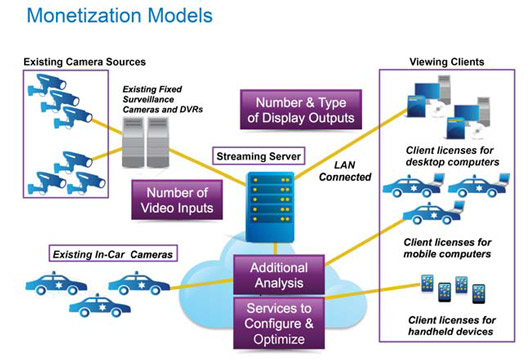As businesses in all corners of the world grapple with the Fourth Industrial Revolution and digital transformation, it is clear IoT is and will continue to play a fundamental role. A new report, written by IoT Now and supported by Flexera Software, explores IoT business model and monetisation challenges and is previewed here
Many industries, including telecommunications, medical, manufacturing, retail and transportation are undertaking IoT initiatives to capture their share of the trillion dollar IoT market. Some IoT deployments are moving beyond initial trials to implementation and some are just getting started. The challenge now, is how manufacturers can generate revenue from these IoT initiatives. Revenue in this case encompasses efficiency gains, cost savings and net new IoT profits.
Traditional hardware manufacturers that are looking to become IoT providers and offer hardware, software, connectivity and services to enterprise organisations will be presented with a series of monetisation challenges. There is much to consider and several different business models and approaches are emerging to take organisations from trial projects into the profitable world of largescale IoT offerings.
The potential for the IoT market is enormous.
IDC’s Vernon Turner predicts that, by 2025, approximately 80 billion devices will be connected to the internet. Today about 11 billion devices connect to the internet, and IDC predicts that will nearly triple to 30 billion by 2020 and then nearly triple again to 80 billion devices five years later.
Research firm Machina Research has projected that, between 2014 and 2024, there will be a total of US$1.3 trillion in IoT revenue that is available to companies that have sophisticated monetisation capabilities – a significant part of the total anticipated revenue opportunity of $4.3 trillion.

Global management consultancy McKinsey & Company estimates the wider IoT to generate between $4 trillion and $11 trillion by 2025. However, in spite of the glowing prospects, there may be a disconnect between the expectation and the reality. In a recent survey, Cap Gemini Consulting uncovered that while 96% of business leaders globally said their companies would be using IoT in some way by 2017, 70% of organisations do not generate service revenues from their IoT solutions.
Why are traditional device manufacturers transitioning to IoT offerings?
Overall, the consensus among most analysts is that IoT will be the new norm. IoT is increasingly cited by management as critical to the future success of their organisation. For many traditional manufacturers, this means becoming a software and services provider to support their IoT offering. Here’s a few reasons why manufacturers are making the leap:
- Grow profits by driving topline growth and recurring revenue streams – to survive in this fast paced and emerging IoT world, manufacturers need to rethink and transform their business models to create new IoT offerings through product innovation and differentiation via software, services and data. The value is no longer in the device but in the software, services and data and manufacturers that capitalise on this by offering and monetising service models can build recurring revenue streams through subscription models as well as usage or outcome-based business models.
- Streamline manufacturing costs and operational efficiencies – in today’s highly competitive market, devices are commoditised and manufacturers are seeking ways to reduce manufacturing costs and simplify hardware production processes. Many manufacturers are adopting technology to electronically control and provision device capability and capacity while at the same time implementing remote device monitoring to streamline support and service processes. This is a baseline for success for IoT solution providers.
- Deepen relationship with customers and deliver an excellent customer experience – with software and services playing a major role in IoT offerings the requirements regarding customer experience change completely. Manufacturers, channel partners and customers alike need complete visibility into what each customer owns and is entitled to in terms of upgrades, maintenance and services – through multiple tiers of distribution.
New IoT business and monetisation model use cases
The IoT offers opportunities across many industries. Some interesting use cases include:
- Anything-as-a-service – In this scenario, the producer started to monetise embedded and server software across an entire public safety value chain from radios and cameras to video processing and jail management. In this IoT model, the solution is delivered as a service model and priced per public safety officer per year.
- Expand value with an ecosystem approach – In this scenario, a casino expanded its value within a broader ecosystem and maximised revenue per patron with software-driven gaming machines integrated with casino management software and digital signage.
- Capture usage – In this use case a highend medical device manufacturer wanted to secure per procedure revenue and utilised metered, pay-per-use or overdraft models, to capture more revenue and make it more affordable to address variable market needs.
- Monetise connected and managed devices – This example involves a medical device manufacturer that embedded software in medical infusion pumps and monetised it based on connection to EMR/ EHR systems and management software.
- Improve competitive position – A manufacturer that makes sensors, valves and software to monitor, track and manage the flow of oil and gas pipes started to monetise value-added software via a usage-based model. This enabled pricing flexibility during turbulent times – such as when oil prices are depressed – by aligning value to revenue model and enabling customer organisations to adopt pay-asyou-go/grow. They also monetised on optimisation, fault detection and operator training system usage runs thereby enhancing customer lifetime value.
- Reduce manufactured device variants to one – An electronic test and measurement device manufacturer configured devices with software in order to lower manufacturing and inventory costs, turn features on and off for targeted solutions and enable field upgradeable devices.
The full report contains further discussion of new models for IoT monetisation and explores the key questions manufacturers should ask as they transition to IoT offerings. It also features guidance on transitioning from hardware to software plus services and IoT offerings, examines some of the security issues facing enterprises and shares further market indicators. The report, in its entirety can be downloaded free at www.monetizingtheiot.com










